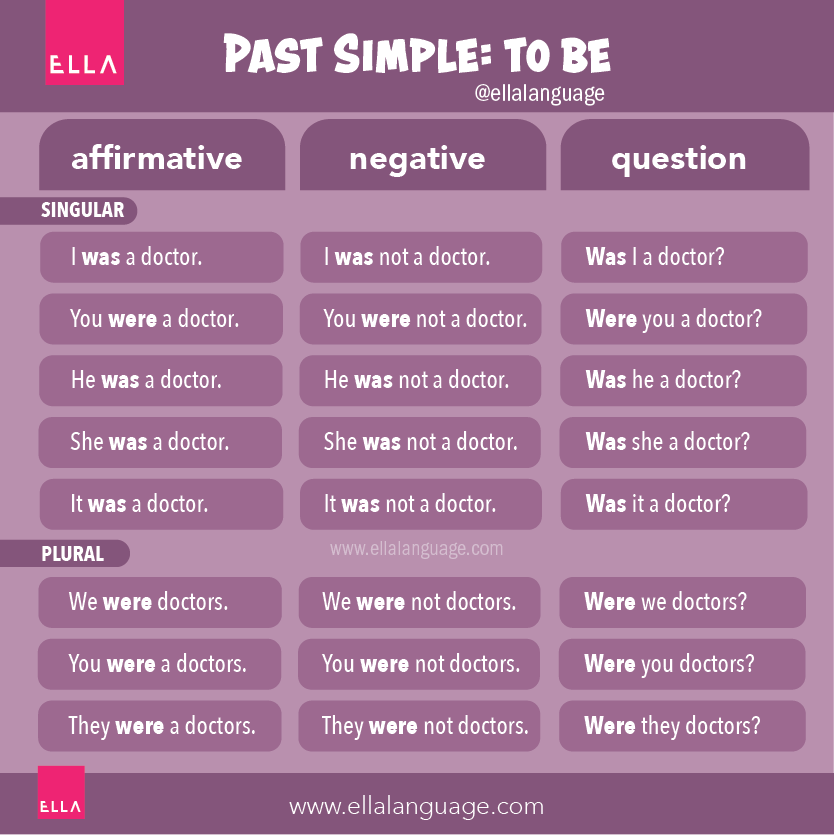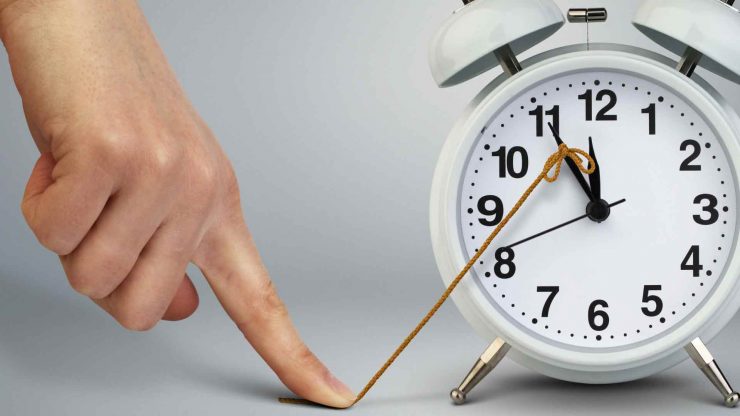Past Simple
The Past Simple is the first past tense that we learn when learning English. In this tense, we use verbs in the past tense form. We use the Past Simple to talk about past events. Similarly to the Present Simple, in the Past Simple, we have two sentence structures – with the verb to be and with other verbs.

Past Simple with to be
The past form of to be is conjugated irregularly according to the subject of the sentence.
To be in the past form
| I was | we were |
| you were | you were |
| he was | they were |
| she was | |
| it was | |
Affirmative sentences with to be in Past Simple
The structure of the sentence with to be in the Past Simple is very… simple ;). After the subject of the sentence, we place the verb to be in the appropriate form.
Subject + was/were + the rest of the sentence
We use to be with nouns, adjectives, and prepositional phrases.
I was sad. (adjective)
I was in Boston. (prepositional phrase)
Negative sentences with to be in Past Simple
We form negative sentences by adding not after to be.
Subject + was/were + not + the rest of the sentence
To shorten the sentence use a contraction:
were not ⇒ weren’t
Questions with to be in Past Simple
Questions with to be are formed by inversion of to be.
Was/Were + subject + the rest of the sentence

Past Simple with other verbs
Just like with the verb to be, other verbs in Past Simple take on the past form.
Affirmative sentences in Past Simple
In affirmative sentences, we place verbs in the past form after the subject of the sentence.
Subject + verb in past tense form + the rest of the sentence
Negative sentences in Past Simple
In the Past Simple, we form negative sentences with verbs other than to be by adding the auxiliary verb did and the word not. When adding did, the main verb returns to the base form (the main verb is no longer in the past tense form).
Subject + did + not + verb in base form + the rest of the sentence
Did not contracts to didn’t.
Questions in Past Simple
We use did to form questions in the Past Simple with verbs other than to be. The questions are formed by inversion of did. Like in negative sentences, the main verb is in the base form.
Did + subject + verb in base form + the rest of the sentence
The Usage of Past Simple
We use the Past Simple to talk about:
Adam bought a new car last month.
Today, she went to work at 8 a.m., ate lunch at 12 p.m., and finished work at 4 p.m.
Adam slept for a very long time today.
Adam studied Greek as a child.
If my team won the finals, we would be champions.






